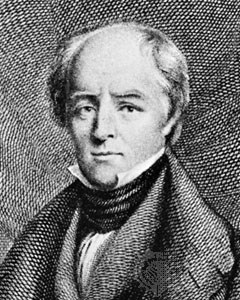Part of a series of articles titled Curious Collections of Fort Stanwix, The 19th & 20th Centuries.
Previous: Room Keys from the Stanwix Hall Hotel
Next: “Frozen Charlotte”
Article

National Park Service
If you were unpopular in the past, chances are your face would end up at the wrong end of your neighbor's business…
Before the 1900s, most people did not have access to indoor plumbing. At night and during the winter, leaving a locked home to use an outhouse could prove uncomfortable and potentially dangerous to one’s health and wellbeing. The solution came in the form of the chamber pot. A chamber pot is a simply a bowl or bucket designed for one to do their “business” in when one couldn’t or didn’t want to leave their house to take care of it. Some were fancy and built into stools. Some were decorated to fit the atmosphere of the house it occupied. Most were just plain utilitarian items. Think of a child’s potty.
This hand painted pearlware chamber pot from Fort Stanwix National Monument dates to c. 1790 – 1835. While exterior decoration suggests that the chamber pot was stored in a bedroom. The practice of including portraits inside chamber pots became popular during and directly following the Colonial period in America, specifically portraits of kings.
During the final years of the Revolutionary War, infamous Green Mountain Boy leader, Ethan Allen, was kept prisoner in England. A story, that circulated for nearly a century after his return to the U.S., involves a portrait of George Washington that Allen found hanging in an English outhouse. When Allen posed the question as to why the great father of the American Nation’s likeness was found in such an unflattering location, the response (to paraphrase) was: Nothing causes an Englishman to lose their bowels quite like the sight of General Washington!
The veracity of this story may be questionable; but the sentiment, that the faces of unliked individuals were regularly adorned with excrement, holds true. Therefore, the image of Captain Basil Hall on the interior suggests that the owners were not fond of the same Captain Basil Hall.

The best guess is that the Captain Basil Hall in the chamber pot refers to a Captain Basil Hall (1788-1841) who was born in Scotland and employed by the British Navy. Captain Hall wrote prolifically of his travels with the navy. These included tomes on Spain, Japan, Korea, South America, the Caribbean, Eastern Europe, and the South Pacific.
So why the strategic placement of Hall’s likeness?
After touring the United States in the 1820s, Hall wrote “Travels in North America in the Years 1827 and 1828,” which many Americans thought painted a derogatory picture of them and their new nation. According to “An American” who reviewed Hall’s book in 1830, “the whole of his work…consists of a comparison between the institutions, character, and manners of the Americans, compared to those of Great Britain, always to the disadvantage of the former, and generally conveyed in terms bitterly sarcastic and contemptuous.” Rome, New York was incorporated as a village in 1819. Residents were surely proud of and hopeful for their hometown where construction of the Erie Canal had just begun two years earlier. While it is possible that the chamber pot could be referring to a different Captain Basil Hall, both the time period and his reputation make a strong case for his identity. Clearly, to early 19th Century Romans, the best place for Captain Basil Hall was the bottom of the pot!
Part of a series of articles titled Curious Collections of Fort Stanwix, The 19th & 20th Centuries.
Previous: Room Keys from the Stanwix Hall Hotel
Next: “Frozen Charlotte”
Last updated: December 16, 2024